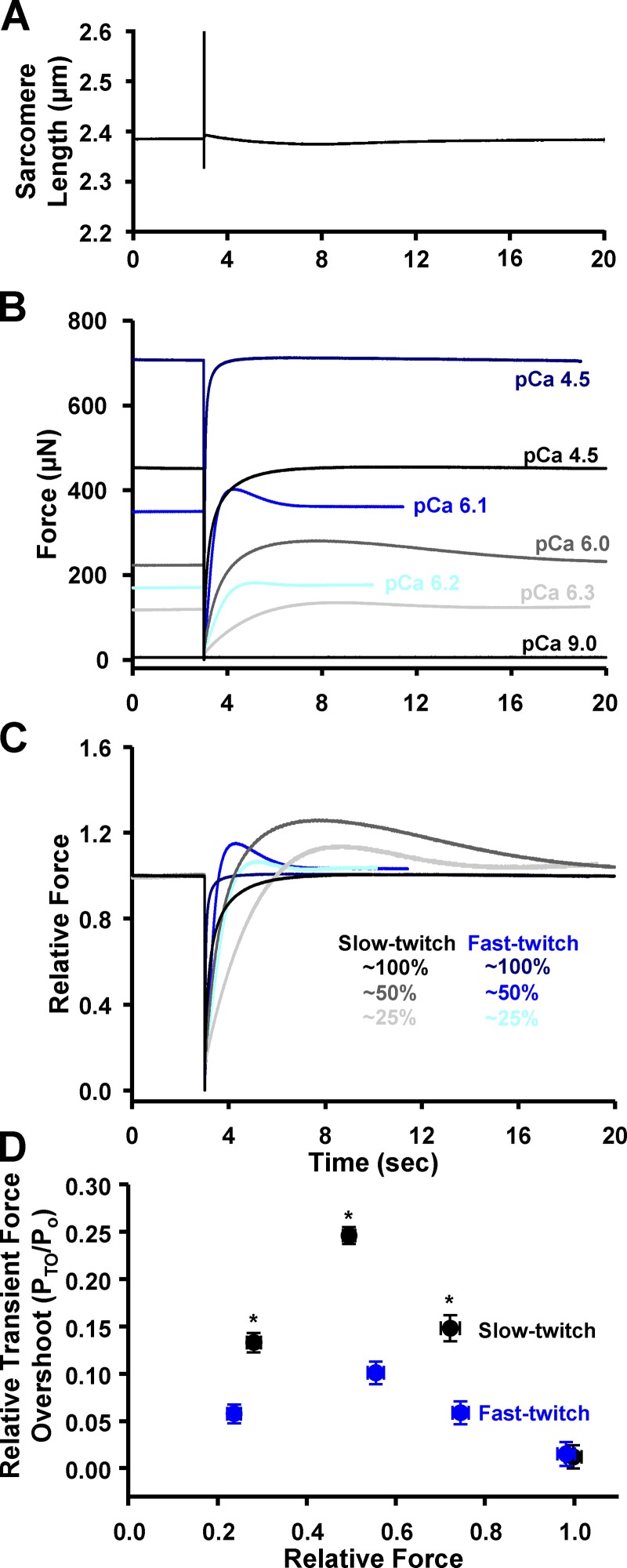Figure 2.
Transient force overshoots in slow-twitch and fast-twitch skeletal muscle fibers. (A) Representative sarcomere length trace during a slack–restretch maneuver. (Of note, the sarcomere length pattern is unresolved during the slackened period.) (B) Representative absolute force traces following a slack–restretch maneuver from a slow-twitch (black, charcoal, gray) and a fast-twitch (navy, blue, aqua) skeletal muscle fiber. (C) Force traces normalized to steady-state force before the mechanical perturbation. (D) PTO was expressed as a fraction of steady-state force (Po) before the slack–restretch maneuver. By two-way ANOVA, within slow-twitch (n = 5) and fast-twitch (n = 4) fiber groups, all PTO/Po points were significantly different from each other except at ∼25% versus ∼75% forces. *, P < 0.05, slow-twitch fibers versus fast-twitch fibers.

